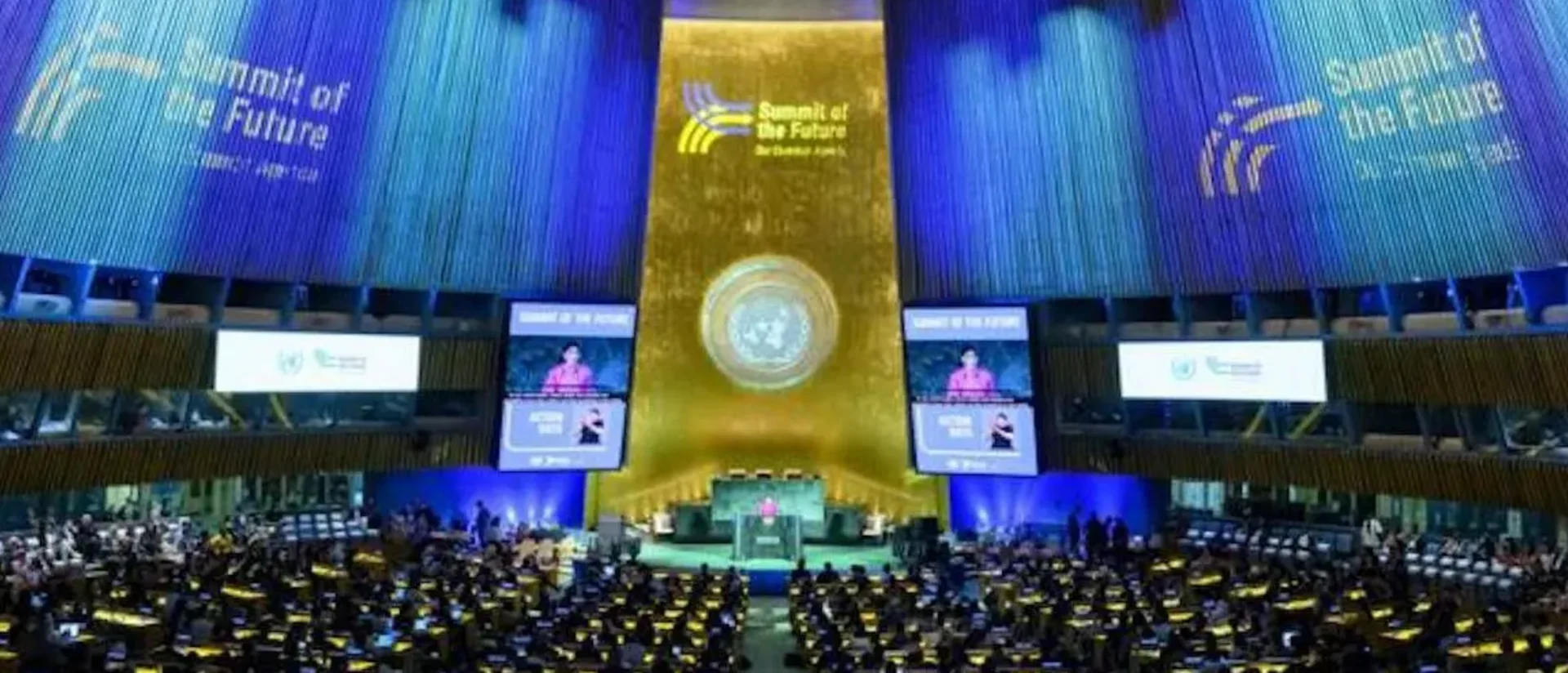by Matt Agorist, The Free Thought Project:

(The Last American Vagabond) On Sunday September 22nd, the United Nations signed the Pact for the Future on the first official day of the Summit of the Future. The UN also signed two complementary documents, the Global Digital Compact and the Declaration on Future Generations. As The Last American Vagabond (TLAV) has been reporting since July 2023, the Summit of the Future and the signing of the Pact for the Future represent a significant step towards empowering the UN to be a world government.
TRUTH LIVES on at https://sgtreport.tv/
The Summit of the Future was held at the beginning of the current 79th session of the annual UN General Assembly. The summit has been in the making since at least 2022 after repeated calls by UN Secretary-General Antonio Guterres to shift financial resources to rapidly complete the Agenda 2030 goals set by the UN in 2015.
The United Nations official Summit of the Future website states:
“World leaders adopt a Pact for the Future that includes a Global Digital Compact and a Declaration on Future Generations. The Pact covers a broad range of themes including peace and security, sustainable development, climate change, digital cooperation, human rights, gender, youth and future generations, and the transformation of global governance.”
While the vast majority of the UN’s member states voted in favor of the Pact, seven nations voted against the document, including Iran, Russian Federation, Belarus, Democratic People’s Republic of Korea, Nicaragua, Sudan, and Syria. Fifteen countries abstained from the vote.
The UN notes that the Pact for the Future is only the latest step in a long line of moves towards world government, or, as they prefer, “global governance”.
“The Pact and its annexes foresee concrete follow-up mechanisms: a high-level review for the Global Digital Compact in 2027, a high-level plenary meeting in 2028 for the Declaration on Future Generations, and a Heads of State and Government meeting at the beginning of the 83rd session of the General Assembly in 2028 for a comprehensive review of the Pact for the Future.”
The UN references several other upcoming gatherings as opportunities to “build on the agreements and advance the actions contained in the Pact for the Future”. These upcoming meetings including the Fourth International Conference on Financing for Development, the Second World Summit for Social Development and upcoming UN Climate Change Conferences.
The completion of the Pact for the Future’s goals will require “national-level engagement, implementation and accountability”. This should be seen as an indication that individual nation states will now use their national budgets and laws to enforce the aims of the Pact.
Emergency Platforms Dropped from the Final Document
Only days before the signing of the Pact for the Future, the 4th draft of the Pact was released. The 4th version featured noteworthy changes from the 3rd draft, including the removal of references to “Emergency Platforms”. TLAV has been warning that these emergency platforms were one more way for the UN to grant itself powers to direct national responses to perceived crises.
The 3rd draft of the Pact read (emphasis added):
“(a) Present for the consideration of Member States protocols for convening and operationalizing emergency platforms based on flexible approaches to respond to a range of different complex global shocks, including criteria for triggering and phasing out emergency platforms, ensuring that emergency platforms are convened for a finite period and will not be a standing institution or entity.
(b) Ensure that the convening of emergency platforms supports and complements the response of United Nations’ principal organs, relevant United Nations entities, United Nations-coordination entities and mechanisms…”
This section in the final version reads:
“(a) Consider approaches to strengthen the United Nations system response to complex global shocks, within existing authorities and in consultation with Member States, that supports, complements and does not duplicate the response of United Nations’ principal organs, relevant United Nations entities, United Nations- coordination entities and mechanisms, and specialized agencies mandated to respond to emergencies…”
The removal of emergency platforms is significant because it is these platforms which are supposed to be the mechanism by which the UN acts in the event of a declared emergency. The 3rd draft of the Pact claimed that the emergency platforms will only be “convened for a finite period”, and would not be a standing institution or entity with respect to national sovereignty. These statements were likely intended to sway critics of the UN who fear that these emergency platforms will be seized upon and used to grant the UN new legal powers.
Now, rather than emergency platforms, the document is focused on considering ways to “strengthen” UN “system response” to “complex global shocks”.
This removal is a small victory for supporters of national sovereignty and independence.
The UN continues to claim the world is facing “global shocks”. The UN defines “complex global shocks” as events that “have severely disruptive and adverse consequences for a significant proportion of countries and the global population”. These shocks would require a “multidimensional multistakeholder, and whole of government, whole of society response.”
Under “Action 56”, the 4th draft of the Pact for the Future calls for strengthening the “international response to complex global shocks”.
Read More @ TheFreeThoughtProject.com



